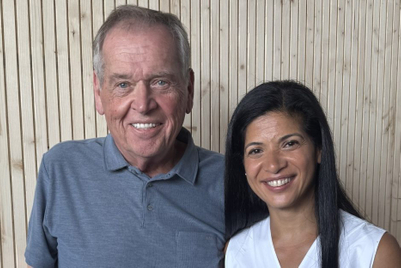
The conversation about talent in advertising is one that seems to perpetually echo through agency corridors— a perennial concern that resurfaces with each wave of resignations or difficult recruitment cycles. Advertising executives often find themselves contemplating, with increasing frequency, why brilliant minds are drifting away from the industry, why promising entrants depart before becoming veterans, and why the middle layers of agencies are thinning. The diagnosis often emerges with elegant simplicity: A talent shortage. The prescription follows with equal directness: More compelling recruitment campaigns, enhanced benefits packages, and perhaps a reimagined office space.
Yet beneath this recurring narrative lies a more nuanced reality—one that invites deeper introspection. Perhaps what the industry faces isn't fundamentally an acquisition problem but a profound paradox between the promise and practice of creative life in advertising. The dissonance lies not in its inability to attract talent, but in the widening gap between the stories told about the industry and the lived experience within it.
From firsthand experience of client servicing models in advertising and consulting, and through the countless stories I've been told in this role, I've witnessed a fundamental disconnection. The industry can sell a unique proposition to its talent: The marriage of commerce and creativity, and the chance to shape culture through ideas that ripple beyond boardrooms into living rooms. This remains a potent promise, particularly to those standing at the threshold of their careers, portfolios in hand, and ambitions unfurled. Agencies offer them a canvas stretched across culture, a chance to craft narratives that might, in those most sublime moments, transcend their commercial origins to become something memorable, perhaps even meaningful.
In those moments of alignment between vision, resource, and fortune, this promise manifests beautifully. The industry produces work that reminds people why they chose this path—ideas that illuminate, provoke, and occasionally transform. Yet for many in creative departments and strategy teams, a different reality gradually reveals itself. Budgets that can't sustain ambitious visions. Timelines that preclude deep thinking. Processes fragmented across specialisations that rarely reunite into coherent wholes. The gradual realisation that much of one's energy is devoted not to creation but to navigation—of approval structures, of risk-averse stakeholders, of procurement-driven constraints.
As I was researching this piece, a former creative—who had spent close to a decade in agency life—described their decision to walk away to me. "I didn't leave because I stopped believing in the work," they shared. "I left because I couldn't keep making peace with the gap between what we say this industry is and what it actually delivers."
They spoke of the early years; the adrenaline of pitches, the satisfaction of nailing a line, the allure of the award circuit. But over time, the mythos wore thin. The job had become a constant negotiation—between ambition and resource, creativity and compliance, soul and scale. "Eventually, I realised I was spending more energy protecting a version of the industry that didn't exist anymore. And once that cracked, it became harder to stay. Not out of bitterness—but because I was just tired."
This sentiment echoes through many quiet exit conversations. It speaks to a growing incongruence between the narrative of advertising as a creative endeavor and its operation as a delivery system. The dissonance isn't merely philosophical, it manifests in concrete realities shaped by evolving business models. As client partnerships increasingly migrate from retainers to projects, as scopes expand while fees contract, agencies find themselves navigating contradictory imperatives: Deliver more expansively while resourcing more efficiently.
This financial architecture of contemporary advertising warrants closer scrutiny. As highlighted in a 2017 Campaign article, many agencies were already reporting profit margins as low as 5% to 10%, a notable drop from the healthier mid-double digits that characterised earlier decades. Today, in 2025, that number typically sits closer to 6% to 12% across most markets. This sustained margin pressure reverberates across the talent ecosystem. It incentivises leaner teams, faster delivery cycles, and the hiring of more junior staff who are less costly but often under-supported. When these early-career professionals leave—frequently within two to three years—their exit is treated as standard churn rather than a sign of deeper structural imbalance.
This pattern manifests with particular clarity in growth markets across Asia, where the dynamics of rapid market evolution collide with increasingly procurement-driven client relationships. The resulting ecosystem unintentionally rewards transience over continuity. "The industry has cultivated a peculiar relationship with expertise," observes a veteran planner who now consults independently. "It celebrates expertise in principle but struggles to value it in practice. It champions craft while compressing the time required to develop it."
This is, of course, just one part of a much larger story. Not everyone leaves advertising out of disillusionment. Some exits are the result of redundancies, restructures, or the increasingly transactional nature of agency-client contracts. Others walk away because servicing work—by its nature—is not always designed for long-term tenure. And many stay, evolving into creative veterans and cultural stalwarts within their organisations. The broader forces reshaping the industry—downsizing, client consolidation, the rise of in-housing—can’t be divorced from this conversation. But if we are to ask the existential question of why talent leaves, we must also ask what within our control can change. Things like how middle management can often feel like a dead-end, with little space at the top, lack of diversity continues to stall upward mobility, and the sheer velocity of change has made it harder than ever to pause and reimagine.
This isn’t about blame—it’s about recognising interdependence. Not all constraints are immovable, and some of the answers may lie less in attracting new talent and more in creating environments where existing talent can thrive. That includes examining how client-agency dynamics shape the creative ecosystem. As marketing teams navigate shrinking planning cycles, expanding channel demands and mounting ROI pressures, those same forces ripple into agency workflows. With CMO tenures often measured in months, the conditions for long-term brand building—and true partnership—diminish. What’s left is often transactional: Prescriptive briefs, reactive feedback, and increasingly narrow space for creative exploration.
Industry metrics reveal this evolution quantitatively: The average creative development process now includes nearly twice the revision cycles it did a decade prior, yet research suggests diminishing satisfaction with outcomes on both sides of the relationship. It's a system that, without deliberate intervention, tends toward mutual frustration rather than mutual value creation.
The arrival of artificial intelligence introduces yet another dimension to this evolving landscape. Generative AI simultaneously presents as salvation and existential question mark. Its capacity to automate certain creative and strategic tasks could, in theory, liberate human talent for higher-order thinking. Yet it also prompts a fundamental reconsideration of value: What constitutes meaningful creative contribution when machines can generate variations at scale? The industry's response thus far reflects a characteristic ambivalence—celebrating AI's potential to elevate creative work while simultaneously using it to rationalise further compression of teams and timelines.
Perhaps the path toward reconciling advertising's talent paradox may lie not in more compelling recruitment narratives but in realigning operational reality with creative aspirations. This requires examining how the industry structures its businesses, how it values and prices its thinking, how it cultivates environments where meaningful work becomes sustainable rather than episodic. It means reconsidering whether volume-driven models ultimately serve either creative quality or talent retention. It invites questioning whether optimisation for short-term delivery comes at the expense of long-term creative vitality.
Most fundamentally, it demands honesty—with clients, with teams, and within the industry itself— about what excellence truly requires in terms of time, expertise, and investment. Perhaps talent isn't fleeing advertising so much as seeking environments where creative ambition and operational reality maintain closer correspondence. The industry still attracts those drawn to its fundamental premise: The opportunity to create work of cultural relevance, to shape perception through ideas, to marry imagination with impact. They don't reject advertising's premise—they seek its authentic fulfillment.
The question therefore might not be how to attract more talent, but how to create environments worthy of the talent it already has—where creative potential can genuinely flourish, where commercial pressures and creative integrity achieve sustainable balance, where the dream offered to newcomers bears closer resemblance to the reality they'll inhabit.
In reimagining this balance, the industry might discover that what appears as a talent crisis may in fact, become an opportunity for renewal—a chance to recalibrate not just how it hires, but how it creates, how it partners, and ultimately, how it fulfills advertising's enduring promise as a creative endeavor of genuine consequence.


.jpg&h=334&w=500&q=100&v=20250320&c=1)


.png&h=334&w=500&q=100&v=20250320&c=1)




.png&h=334&w=500&q=100&v=20250320&c=1)





.png&h=268&w=401&q=100&v=20250320&c=1)


